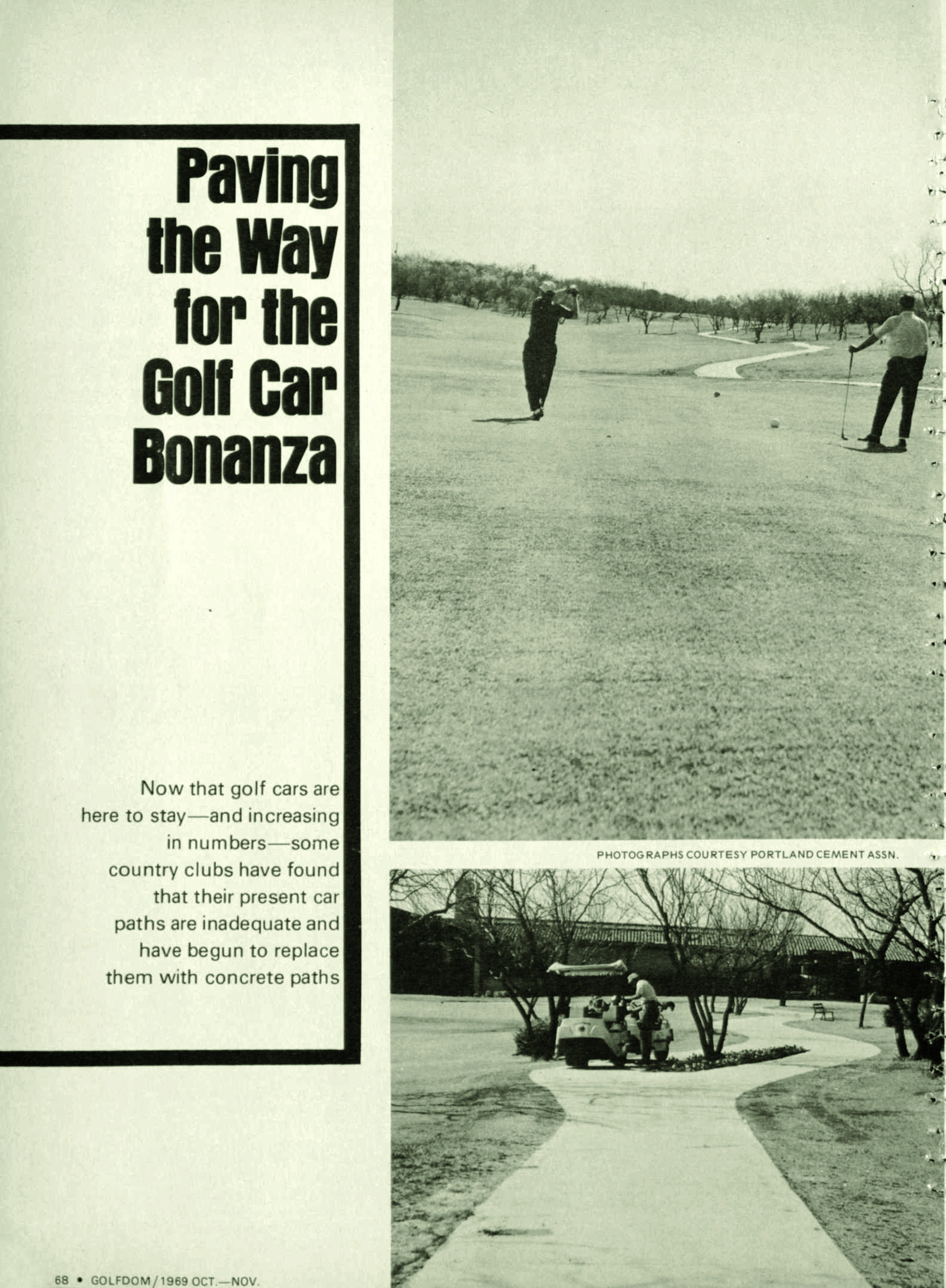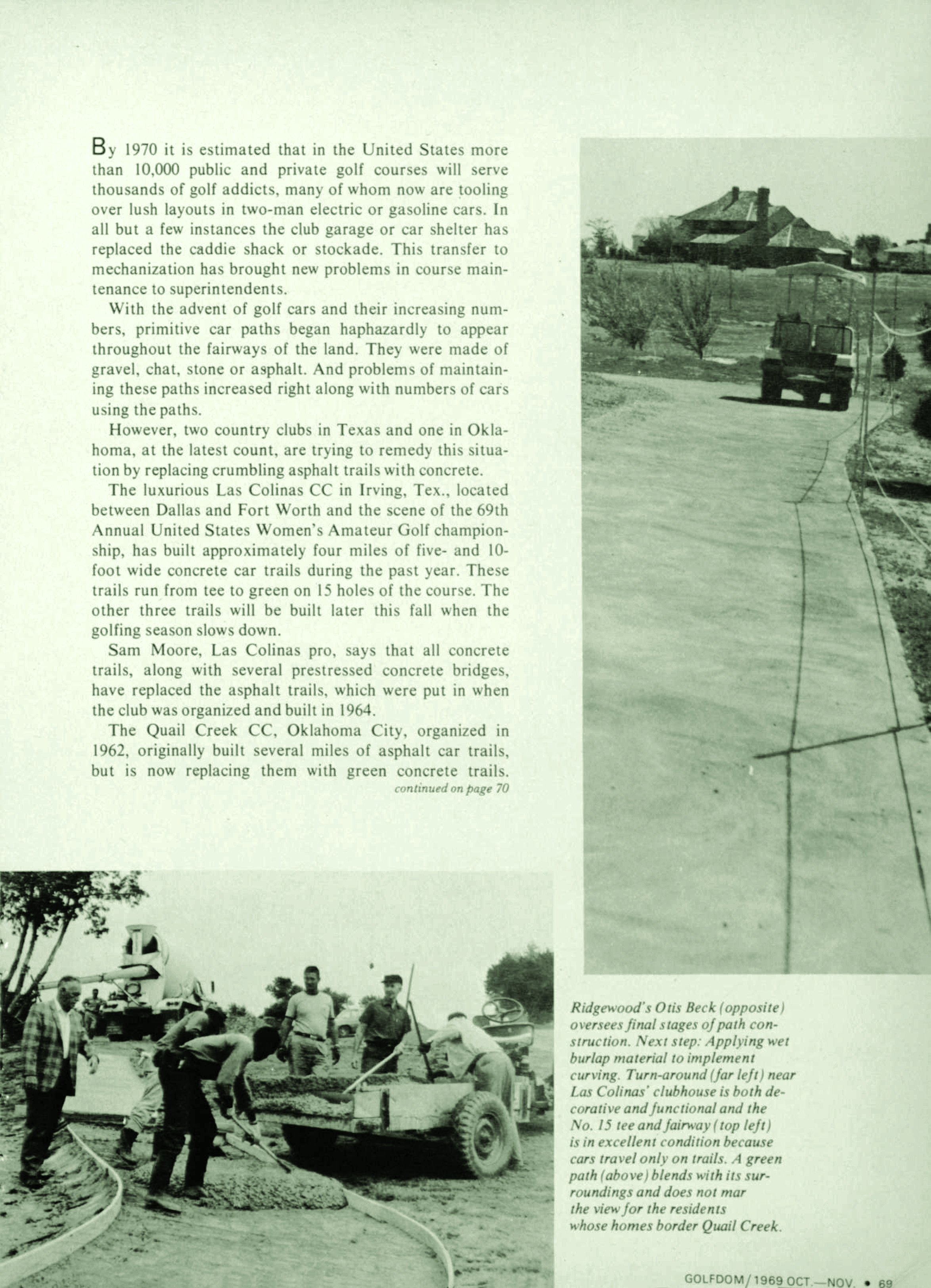The Golfdom Files: Paving the way for the golf car bonanza
Since their invention in the 1950s, the golf car has come a long way, growing into a $2 billion industry that continues to expand today.
Looking back to the October/November 1969 issue of Golfdom, two country clubs in Oklahoma and Texas worked to prepare their car paths for the continuing popularity of golf cars. View the full article here.

Photo: Golfdom Staff
By 1970, estimates say that, in the United States, more than 10,000 public and private golf courses will serve thousands of golf addicts, many of whom now are tooling over lush layouts in two-man electric or gasoline cars.
In all but a few instances, the club garage or car shelter has replaced the caddy shack or stockade. This transition to mechanization has brought plenty of new problems with course maintenance for superintendents.
With the advent of golf cars and their increasing numbers, primitive car paths began appearing randomly throughout the fairways of the land, being made of gravel, chat, stone or asphalt. And the problems of maintaining these paths increased along with the number of cars using the paths.
However, two country clubs in Texas and one in Oklahoma, at the latest count, are trying to remedy this situation by replacing these crumbling asphalt trails with concrete.
The luxurious Las Colinas CC in Irving, Tex., located between Dallas and Fort Worth and the scene of the 69th Annual United States Women’s Amateur Golf championship, has built approximately four miles of 5- and 10-foot wide concrete trails during the past year.

Photo: Golfdom Staff
These car trails run from tee to green on 15 holes of the course. The other three trails will be built later this fall when the golf season slows down.
Sam Moore, Las Colinas pro, says that all concrete trails, along with several prestressed concrete bridges, have replaced the asphalt trails. These trails were built when the club was organized and built in 1964.
The Quail Creek CC, Oklahoma City, organized in 1962, originally built several miles of asphalt trails. Now it is replacing them with green concrete trails.
All agree that construction of permanent concrete trails has added to the beauty of their respective courses. Once forms are removed from cured concrete, sod is applied and bare spots, which were almost inevitable around tees, greens and turnarounds, are eliminated.
Both Quail Creek and Las Colinas have developed attractive planting areas featuring trees, perennials and plants.
The design of the trails follows virtually the same pattern on all three courses. Simple excavation work carries out with light equipment, usually a front end loader on a small tractor. Most trails are basically five-feet wide and four inches thick. Wider trails are built around tees and turnarounds.












